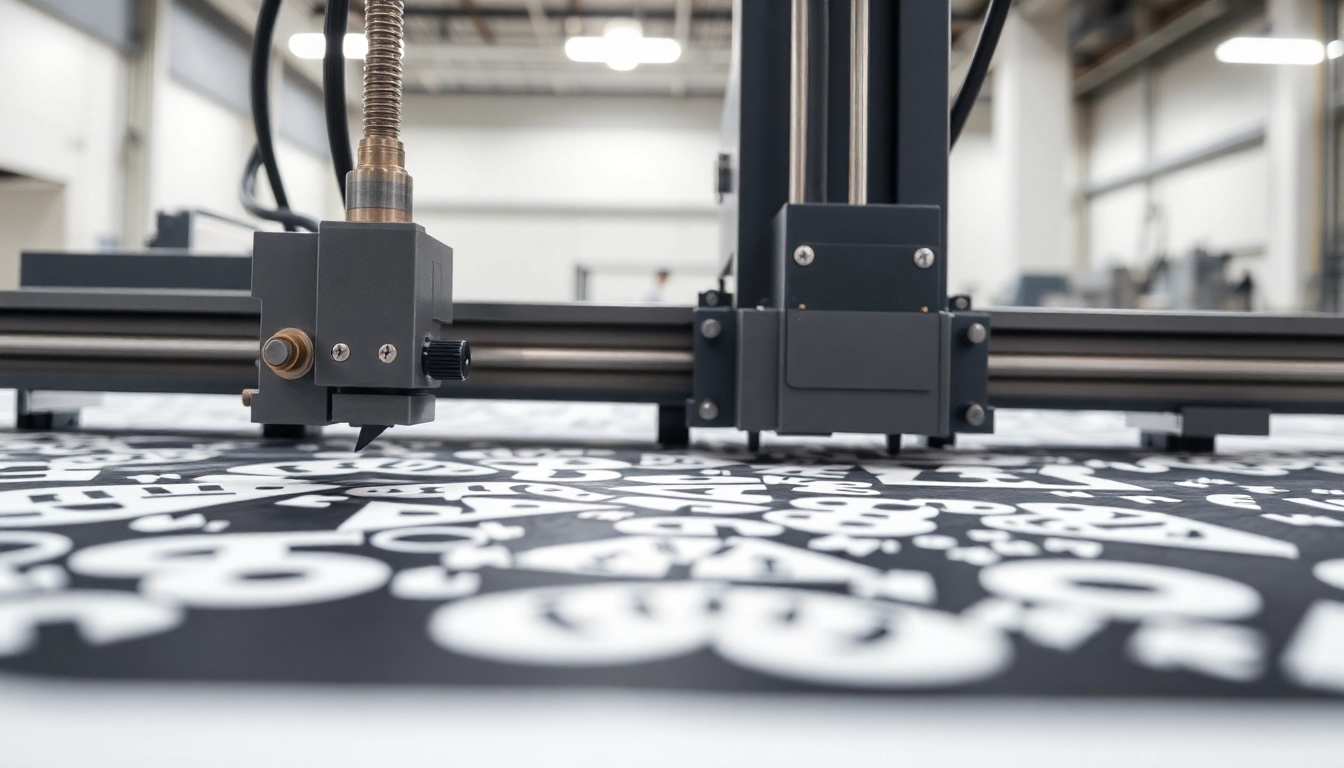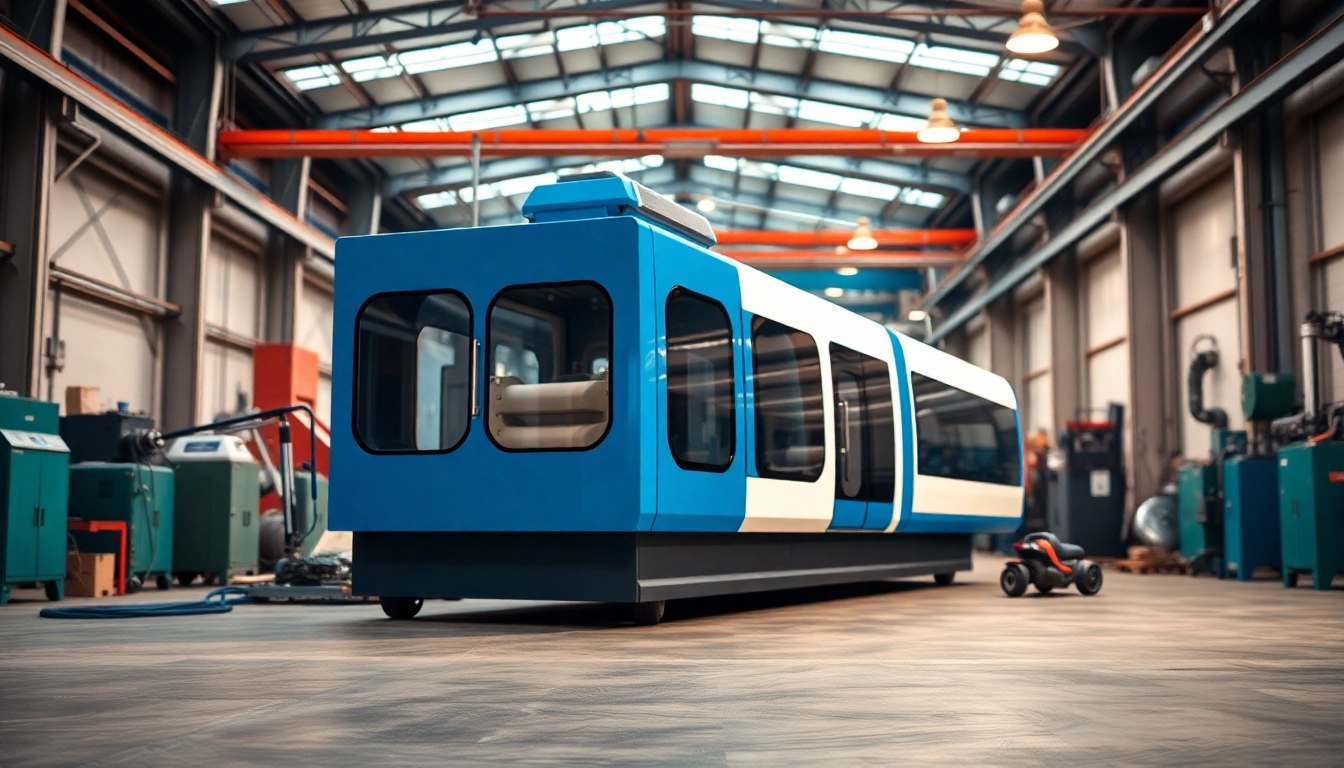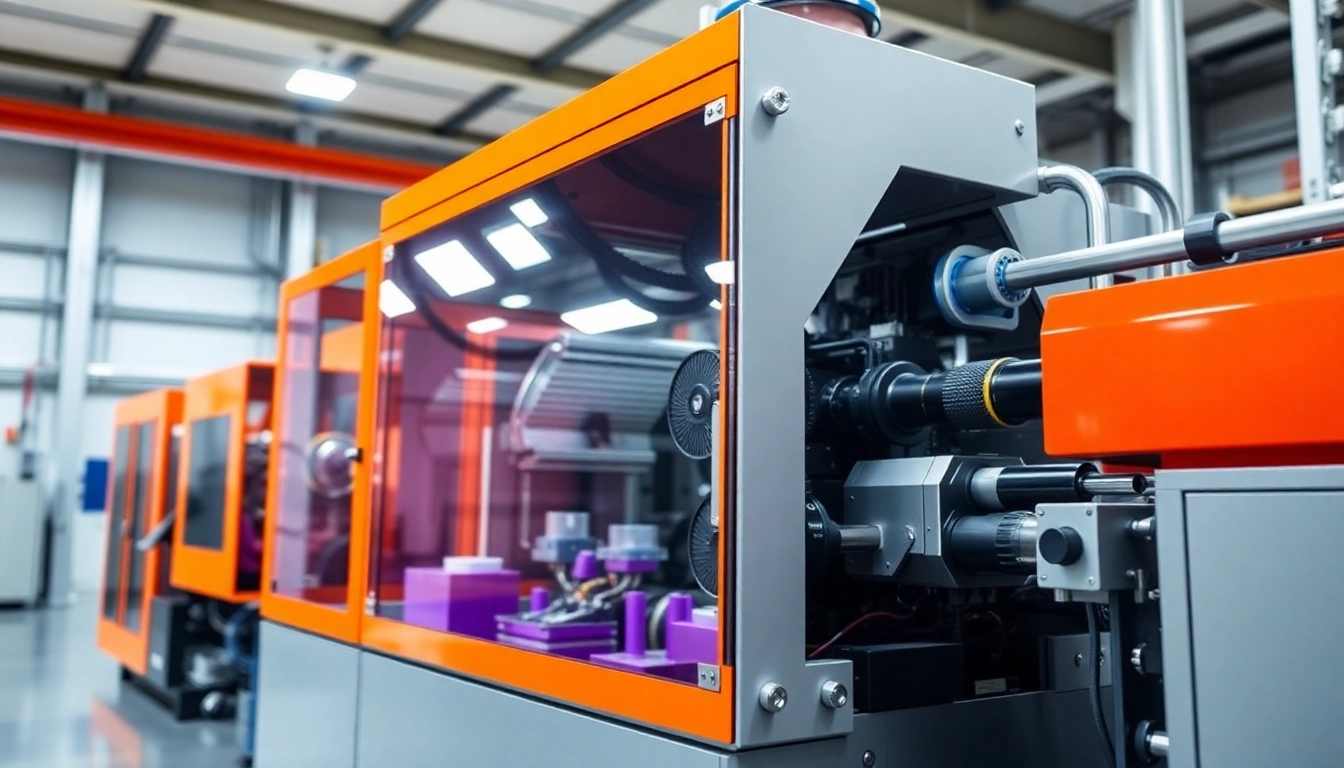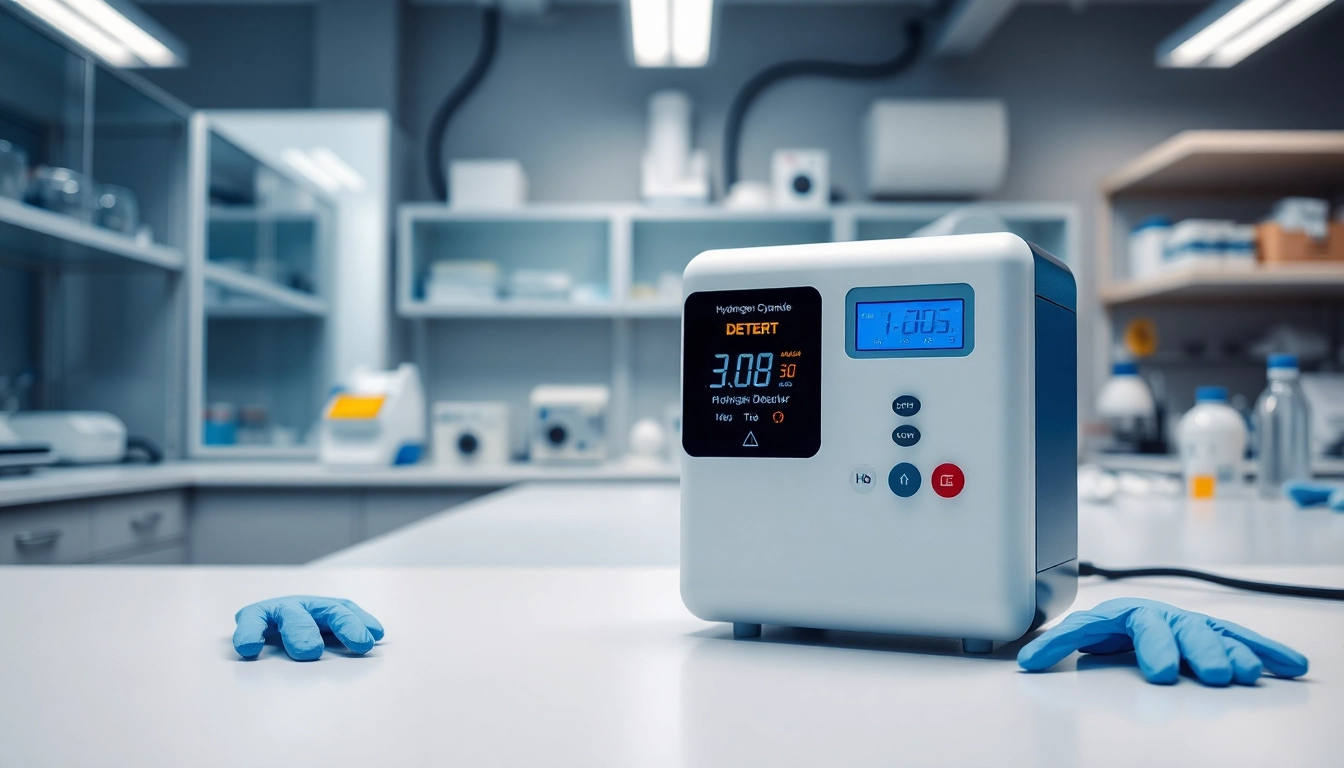Understanding Precision Die Cutting
What is Precision Die Cutting?
Precision die cutting is a highly efficient manufacturing process used to transform sheets or rolls of material into custom shapes and parts with exceptional accuracy. This method utilizes a sharp die that can cut through various materials, from paper and plastics to rubber and metals. As industries evolve and demand intricate designs for products, precision die cutting has become an essential tooling technique in various applications. The process is especially attractive due to its ability to produce consistent, reliable results with minimal waste. The term “precision” reflects the level of exactness achieved in producing intricate parts that meet specific tolerances, making this technique ideal for high-volume production runs. For a deeper insight into how this technique can elevate your production quality, explore precision die cutting further.
Key Benefits of Precision Die Cutting
The benefits of utilizing precision die cutting are manifold, making it a favored choice for manufacturers. Some key advantages include:
- High Accuracy: Precision die cutting ensures that the dimensions of each part conform to strict tolerances, which is critical for industries like automotive and aerospace.
- Consistency: Once the die is manufactured, it produces identical parts in high volumes, maintaining uniformity across all products.
- Material Efficiency: The die cutting process maximizes material usage, reducing waste and costs associated with excess scrap material.
- Versatility: Precision die cutting can be used on a wide range of materials, including paper, plastic, rubber, and even certain metals, allowing for diverse applications.
- Boosted Production Speed: This method reduces production times as parts can be cut significantly faster than other cutting methods.
Common Applications and Industries
Precision die cutting is utilized in numerous industries, each benefiting from its unique capabilities:
- Packaging: Die cutting is extensively used to create packaging materials, such as boxes, labels, and inserts, ensuring precise dimensions and fit.
- Automotive: In the automotive industry, custom seals, gaskets, and insulation materials are commonly produced using precision die cutting.
- Medical: Medical devices often require precision die-cut parts, such as surgical drapes, wound care products, and components for devices.
- Electronics: This industry benefits from precision cut components used in devices, including circuit boards and insulative materials.
- Consumer Goods: From promotional items to electrical insulation, various consumer products leverage precision die cutting for efficiency and design excellence.
Types of Precision Die Cutting Methods
Flatbed Die Cutting Explained
Flatbed die cutting is a process where a hydraulic press pushes a flat die down onto the material, cutting it into the desired shape. This method is ideal for high-precision applications and can handle a wide variety of materials. Flatbed die cutting is particularly useful for thicker materials, as the pressure can be adjusted to suit the material’s thickness. However, the setup time can be longer compared to other methods, which may affect overall productivity, particularly for shorter runs.
Understanding Rotary Die Cutting
Rotary die cutting is a continuous process that utilizes a cylindrical die to cut multiple materials as they pass through. This method is particularly efficient for large-scale production and intricate designs. It allows for a combination of operations such as cutting, perforating, and scoring in one run. The rotary die cutting technique is well-suited for thinner materials and offers high-speed efficiency, making it an excellent choice for packaging applications.
Choosing Between Die Cutting Techniques
The choice between flatbed and rotary die cutting methods depends on various factors, including material type, thickness, production volume, and design complexity. Businesses should assess the specific needs of their projects to choose the most appropriate method. For instance, if the production involves thicker materials or requires intricate features, flatbed die cutting may be advantageous. Meanwhile, for high volumes of continuous runs with thinner materials, rotary die cutting provides a faster, more cost-efficient solution.
Material Considerations for Precision Die Cutting
Best Materials for Die Cutting
Choosing the right materials is pivotal in the precision die cutting process. The most commonly used materials include:
- Paper and Cardboard: Ideal for a variety of applications, these materials are easily die-cut and scored, making them perfect for packaging.
- Plastics: Different types of plastics, such as polycarbonate and acrylic, are excellent choices for durable and lightweight parts.
- Foams: Various foams are used primarily for cushioning and insulation products.
- Metals: Light metals can also be die cut, especially for applications in manufacturing, where precision parts are necessary.
Material Thickness and Its Impact
Understanding the thickness of the material is vital when designing die cut parts. Thicker materials typically require a more robust die and greater pressure during the cutting process. Additionally, the type of material can affect the outcome; for example, softer materials will cut more easily, while harder materials may need additional considerations for blade types and configurations. Manufacturers should closely define the material specifications to optimize the die cutting process and ensure product quality.
Custom Material Options
In addition to standard materials, custom options are available through various suppliers, often tailored for unique applications. Specialty materials might include adhesives, composites, or unique blends suited for specific industries like medical or aerospace. These custom solutions often enhance performance characteristics, allowing businesses to meet unique product requirements.
Cost Factors in Precision Die Cutting
Understanding Pricing Models
The cost of precision die cutting can vary significantly based on several factors, including material choice, complexity of the design, volume of production, and the type of die used (flatbed vs. rotary). Generally, there are fixed costs associated with die creation and setup, followed by variable costs per unit produced. Businesses should consider these factors carefully to determine the overall budget and evaluate potential suppliers.
Cost vs. Quality: Making the Right Choice
When assessing potential die cutting suppliers, it’s crucial to balance cost with quality. While cheaper options may seem attractive initially, they may lead to inconsistencies in product quality or a higher rate of defects. Establishing a strong relationship with a reputable die cutting manufacturer can yield long-term benefits such as improved quality, faster turnaround times, and more reliable support.
Maximizing ROI with Efficient Designs
To achieve an optimal return on investment (ROI) from precision die cutting, companies should focus on designing efficient parts that minimize material waste, improve cut speeds, and enhance the use of cutting technology. By collaborating closely with die makers and engineers during the design phase, businesses can refine their designs for manufacturability, resulting in lower costs and improved production timelines.
Best Practices for Precision Die Cutting Projects
How to Design for Die Cutting
Designing for die cutting requires careful consideration of various factors to ensure efficiency and effectiveness. Key best practices include:
- Simplify Geometries: Complexity can lead to higher costs and longer production times. Simplifying shapes wherever possible helps achieve efficiency.
- Incorporate Tolerances: Clearly define tolerances for each component to ensure they meet functional requirements while allowing for production variances.
- Utilize Nesting: Arrange multiple parts on the sheet to maximize material use and minimize waste.
- Test and Validate: Create prototypes and conduct tests to ensure designs are practical and meet performance expectations before proceeding to full production.
Quality Control in Die Cutting Processes
Quality control is critical in precision die cutting projects to ensure that every part meets the specified standards. Implementing regular checks throughout the process can catch issues early. Techniques might include:
- Routine Inspections: Regularly inspect dies and equipment to maintain their effectiveness and accuracy.
- Process Audits: Periodically review and refine processes to identify areas for improvement.
- Statistical Process Control (SPC): Use SPC methods to monitor performance and quality metrics, reducing variability in part production.
Future Trends in Precision Die Cutting Technology
As technology advances, several trends are shaping the future of precision die cutting:
- Automated Processes: Automation in manufacturing is increasing, with automated die cutters improving operational efficiency and reducing human error.
- Integration with Digital Technologies: Combining die cutting with digital printing allows for more customizable and flexible production processes, catering to unique customer specifications.
- Sustainable Practices: The industry is seeing a shift towards eco-friendly materials and processes, reducing waste and enhancing environmental responsibility.
- Data-Driven Decision Making: Utilizing data analytics to refine processes and improve production quality will become increasingly prevalent, enabling manufacturers to maximize efficiency.



